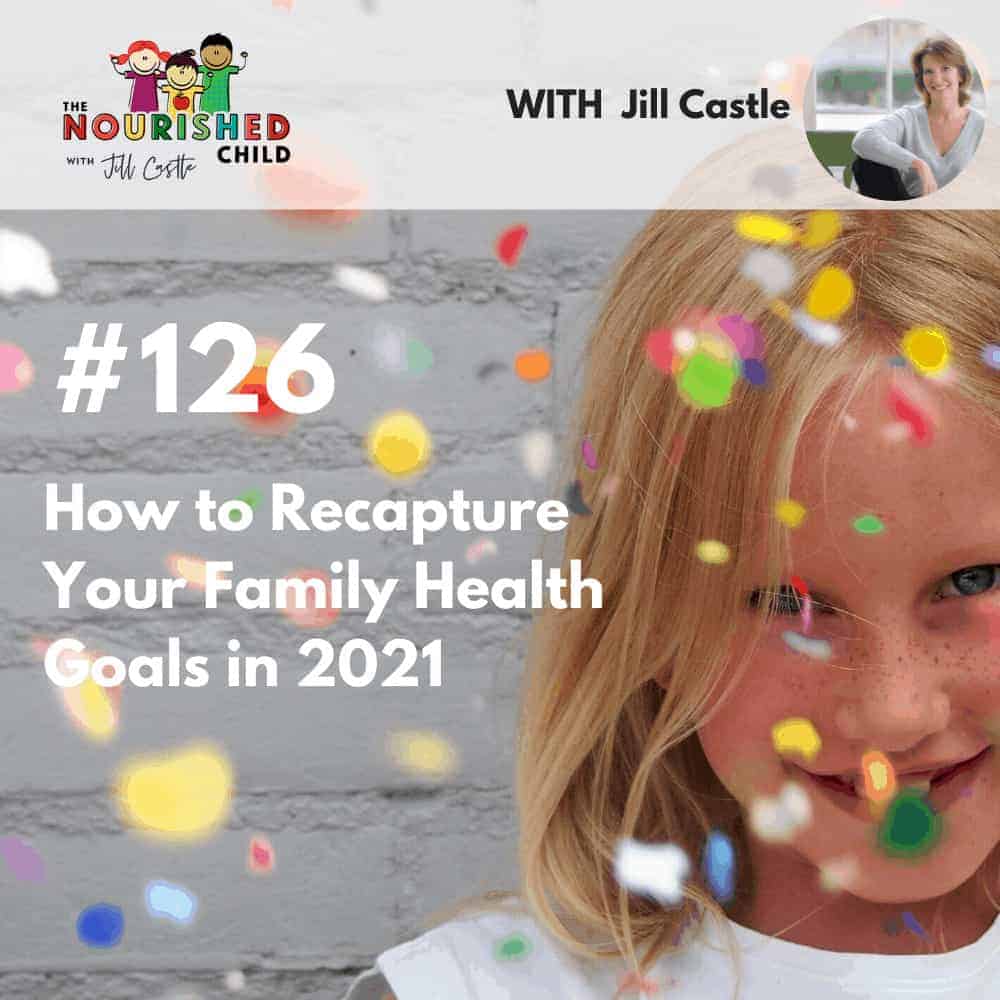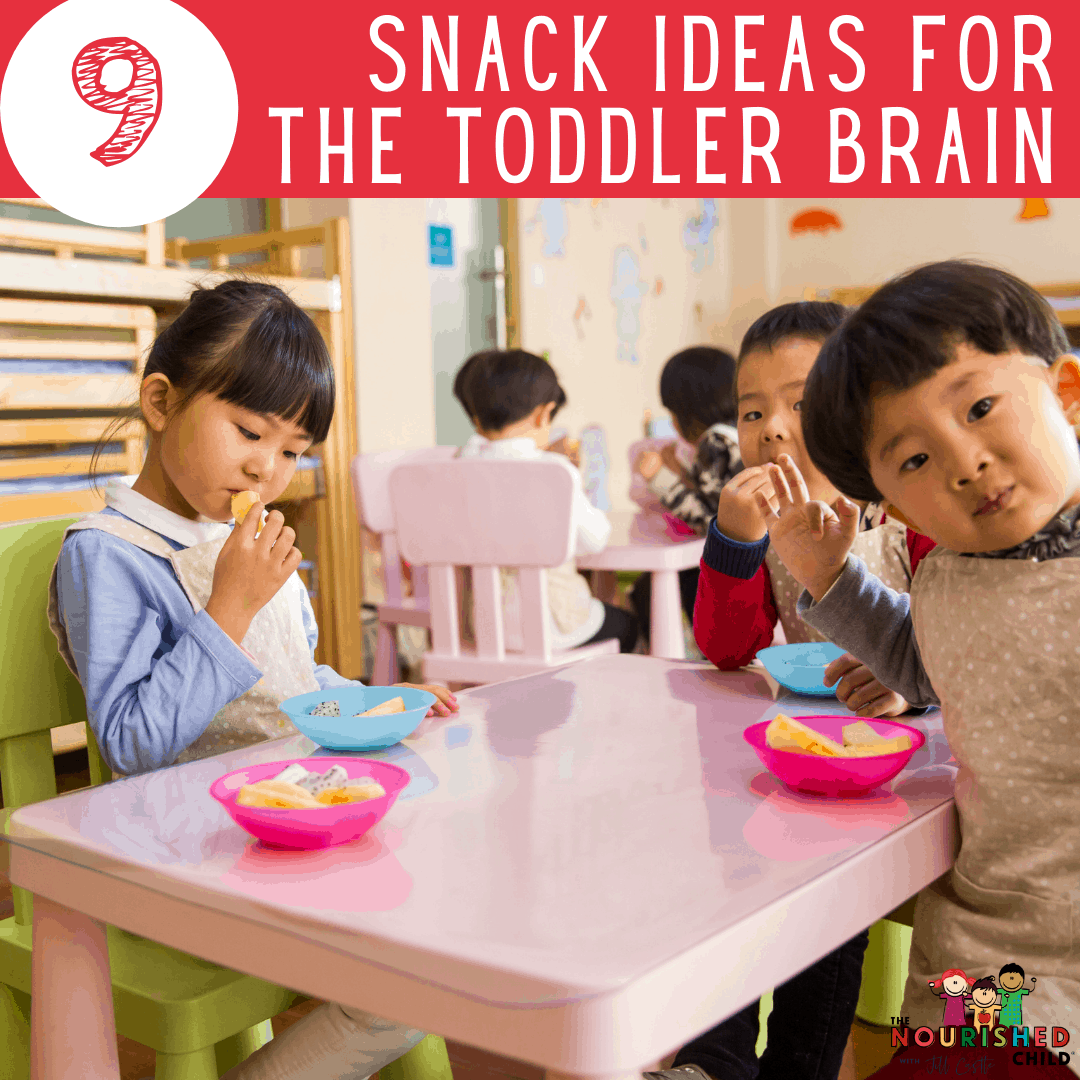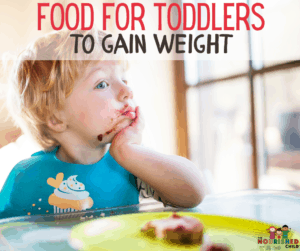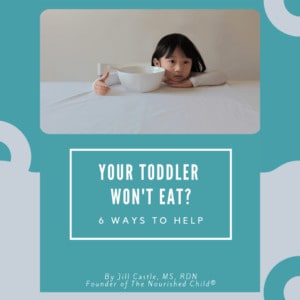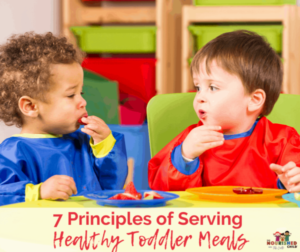How to Help Picky Eaters Gain Weight
January 12, 2021
How do you help a picky eater gain weight? If you’re worried about your child, whether he be a toddler or older kid, I’ve got plenty of advice in this article to help!
If your child refuses to eat anything, you’re in the right place.
Here, you’ll learn about how to gain weight for picky eaters including my favorite high calorie foods that are both healthy and nutritious.
You’ll also learn how to add extra calories and nutrition to everyday meals so that your child is more likely to gain weight and grow better on the growth curve.

Kimberly’s mom was worried. At her daughter’s last check up, she hadn’t gained any weight and the doctor was worried about her growth chart progress.
Mom suspected this, as she hadn’t bought new clothes for her in a while, and those she wore were sagging on her slight frame.
Three-year-old Kimberly was a typical toddler.
Busy, explorative, sometimes cranky, and opinionated.
She was experiencing lots of changes: She started pre-school, gave up naps, was becoming more social with new friends, and as toddlers often do, was becoming more selective and fussy with food.
The child’s doctor advised Mom switch back to whole milk and get Kimberly to eat a snack before bedtime.
She followed his advice, but it wasn’t enough.
She needed more help. That’s when she contacted a registered dietitian (me).
Is Your Toddler a Picky Eater?
If you think you have a picky kid on your hand, you’re not alone.
Studies suggest that up to 50% of children are picky eaters.
Most research connects a genetic tendency to pickiness.
So, if you were picky or your spouse was an underweight child due to food fussiness, there’s a good chance your offspring will be finicky, too.
Picky eating is hard to measure in a study setting, as quantifying it often reflects a parent’s perception of their child’s eating behaviors and any power struggle they may have around food.
The good news is that we know when it typically sets in: during the toddler and preschool years, or between ages 2 and 6 years.
This is a developmentally sensitive time when toddlers and preschoolers have a drive to explore and be independent, which may be in conflict with a parent’s desire to control or assist their child.
A List of Typical Eating Behaviors for the Picky Child
Recognizing fussy eating when you see it is a key to addressing it effectively.
There are certain signs that run true, although each child will be different in their eating behaviors and symptoms of picky eating.
The most common signs of picky eating
- Refuses to eat certain foods or food groups, especially veggies
- Rejects food that was previously liked
- Eats the same preferred foods, over and over
- Refuses to try or eat anything new foods
- Demonstrates fussiness with food such as wants food prepared a certain way
- Shows disinterest in food or a lack of appetite
- Eats limited amounts of food
- Has a limited diet and doesn’t get enough calories
- Eats slowly
- Has experienced weight loss, or is losing weight

My Picky Eater is Underweight
Many children who are picky will continue to gain weight and grow normally despite the appearance of barely eating enough food and limited food preferences.
This is often why healthcare professionals tell you to not worry about it and wait it out.
But some picky eaters will stop gaining weight, and perhaps even lose weight, missing essential nutrients and causing a negative impact on nutritional status and overall growth.
Telling families not to worry about a child who isn’t eating well may not be in the best interest of the child, particularly if they’re showing signs of poor weight gain, weight loss or significant nutritional gaps in the diet.
If your child is underweight or losing weight, you’ll want to take action and help him gain weight in ways that avoid too much pressure to eat.
Remember, angst around eating is counterproductive.
Power struggles with your child will delay progress and may make eating worse.
Weight Gain Meal Plan for Picky Eating
There are a number of ways to help selective eaters gain weight.
Some strategies involve adding calories to foods and choosing high calorie foods for weight gain, which I cover below.
Other measures include setting up a structured approach to feeding during the day.
This means using regular times for meals and snacks at pre-determined intervals that encourage your picky toddler to build up an appetite for eating.
And other interventions involve revamping your feeding style and approach to be more positive.
Usually, it’s not just one method that moves the needle on the scale.
Rather, it’s a holistic, integrated approach using food, feeding and knowledge of your unique child.
For this article, I’ll focus on one aspect of the meal plan: high calorie nutrient-rich foods that promote a child’s weight gain.

High-Calorie Foods for Picky Eaters
Certain foods are naturally high in calories and working these into the diet of your picky eater may increase overall calorie intake.
One of my favorite foods for helping kids gain weight fast are those that contain healthy fats like avocado, vegetable oils, nut butters, and nuts and seeds.
Of course, some foods are high calorie but not rich in nutrients.
Read: Why Picky Eaters Love White Foods (And What You Can Do About That!)
For example, candy, chocolate, cookies, ice cream, and fried foods are high in calories, but low in nutrients.
To help your child gain weight healthfully and with real food, incorporate some of these high calorie foods that are healthy and nutrient-rich when meal planning.
Picky Eater Food List: Healthy Foods for Weight Gain
- Eggs
- Beans, especially in dips (hummus), soups (black bean or chili) or mixed into dishes (pasta, rice)
- Peanut butter and other nut butters
- Nuts (offer age-appropriately as these can be a choking hazard for young children)
- Chicken drumsticks and thighs (with skin)
- Hamburger
- Turkey (dark meat from thighs or legs)
- Deli meats (low sodium)
- Cheese (slices, sticks, cubes, shredded, etc)
- Milk (whole or 2%)
- Full fat yogurt
- Fruit smoothies
- Cottage Cheese
- Banana
- Mango
- Canned fruit
- Dried fruit
- Potato
- Sweet potato
- Avocado
- Edamame
- Black olives (and others)
- Corn
- Peas
- Filled pastas such as tortellini, ravioli and gnocchi
- Fruited bread like raisin bread
- Muffins
- Bagels
- Granola (bars, bites, etc)
- Some ready-to-eat cereals (with clusters or dried fruit)
- Butter
- Plant oils such as olive and vegetable
- Mayonnaise
- Sour cream
- Cream cheese
- Guacamole
- Hummus
- Tapenade (olive dip)
- Salad dressing
- Jelly and jams
- French toast
While some of these foods may seems exotic and out of the realm of reality for your child, you can still give them a try.
I’ve seen kids gobble up black olives, mashed avocado and sweet potato fries at the total dismay and surprise of their parents.
Anything is possible if you create the opportunity!
Picky Eaters: Anything is possible if you create the opportunity. #pickyeaters #pickyeatinghelp Click To TweetAdding Calories to Foods
Boosting calories in the foods your child already likes and eats is another approach to increase the overall caloric content of the diet and promote weight gain.
This has been a successful tactic with many of my clients, however, I must warn you that altering a food your child already likes comes with some risk.
In some highly sensitive children, like those with extreme picky eating, modifying the foods they already like may backfire, leading to food refusal.
Take this ‘adding calories to foods’ approach carefully and watch for signs of food rejection.
If you see them, change direction.
Tips for Increasing Calories in Foods
Here are some ways you can add calories to foods:
- Add butter atop vegetables, pasta, rice, and breads in generous amounts.
- Substitute whole milk, half and half, or cream in recipes calling for water or milk.
- Saute vegetables with olive oil or butter instead of steaming.
- Double dress pasta by draining first, adding olive oil to coat, then add sauce, butter, cheese.
- Use fruit dips or whole milk yogurts as a high calorie dip for fresh fruits.
- Use hummus, guacamole or cheese dips for fresh or blanched veggies.
- Serve canned fruits in heavy syrup instead of “natural juices”.
- Blend Carnation Instant Breakfast or Ovaltine with whole milk for a high calorie drink or as the base of a smoothie.
- Add shredded or sliced cheese to vegetables, breads, eggs, and pastas.
- Add an additional egg to recipes for pancakes, muffins, waffles, and other baked goods.
- Use peanut butter, age-appropriately, as a spread or dip with fruit, vegetables, crackers, and breads.
- Use butter as a base for sandwiches like peanut butter and jelly, nut butter and banana or grilled cheese.
- Reconstitute fruit juice and soups with less water.
- Make hot cereals with milk or juice instead of water.
- Add chopped eggs to casseroles, salads, and vegetables. Cook eggs in oil or butter.
Want More Help for Picky Eaters?
If your child isn’t gaining weight or growing well, try some of these high calorie, nutrient-rich foods and incorporate more calories into nutritious meals and the foods your child is already eating.
Even small increments in caloric intake can move the needle and improve weight status.
Remember, there is so much more that goes into feeding picky eaters and helping them grow into kids who enjoy healthy food.
For one, starting early with flavor training and exposing your child to a wide variety of foods and flavors. And avoiding the trap of short-order cooking.
Be sure to take a holistic approach that nurtures and nourishes your child.
Check out my workbook Try New Food: How to Help Picky Eaters Taste, Eat & Like New Foods!
Head over to my parent education website for more resources including guidebooks, workshops and classes.
Be sure to check out The Ultimate Guide to Feeding the Picky Eater!
Last, check out my YouTube video on the topic!


